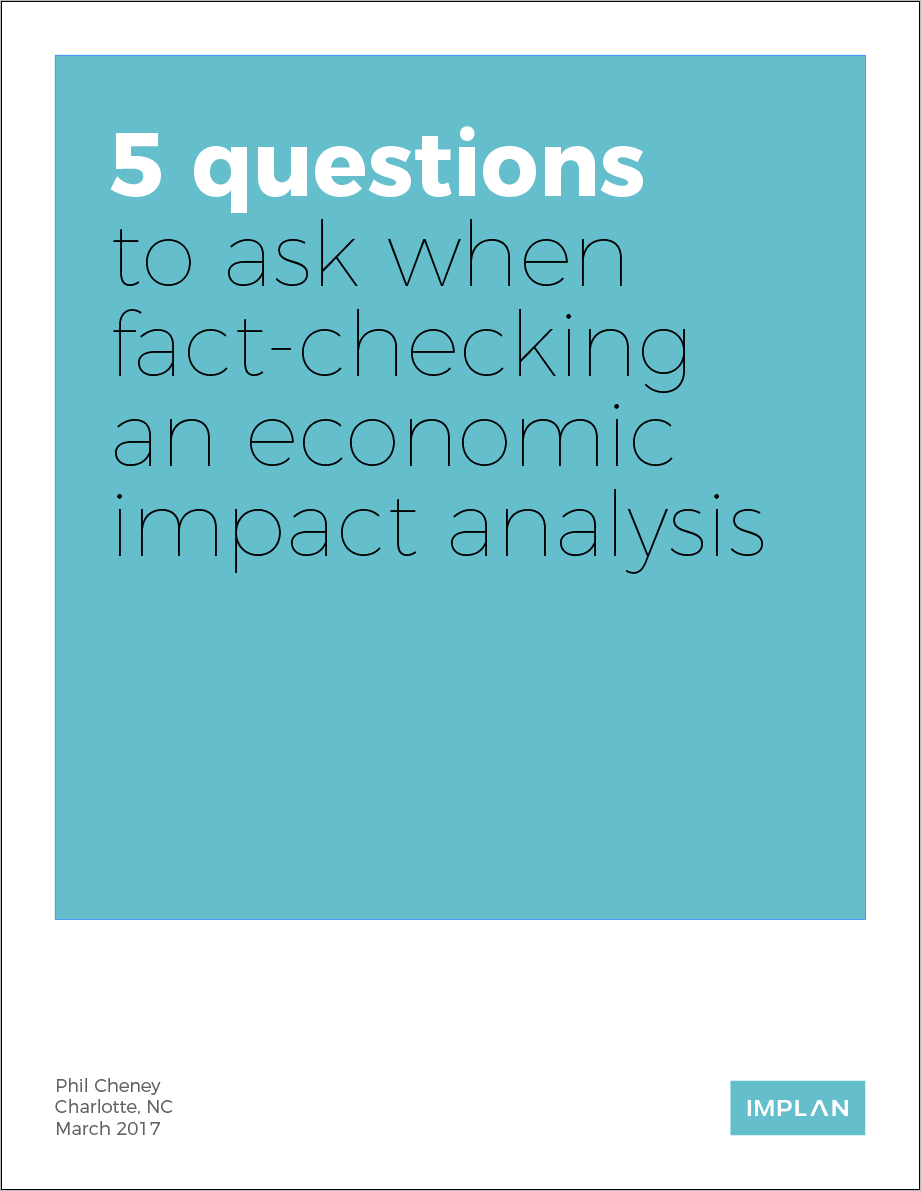Amazon recently announced that it would be raising the minimum wage paid to workers to $15 per hour (minimum wage standards sometimes vary by state and city; the current federal minimum pay is $7.25). According to the company’s blog, the wage increase will go into effect on 1 November, will be extended to associates employed by temp agencies, and is anticipated to affect the paychecks of more than 250,000 Amazon employees, as well as more than 100,000 seasonal holiday employees. Workers at Amazon subsidiaries (including Whole Foods) will also benefit from the parent company’s new initiative to “lead on pay.”
Is it reasonable, then, to expect a ripple effect in the U.S. economy when so many workers will have more income to spend in their home economies across the country? Short answer: Yes. But how those economic benefits are felt is dependent on a few key factors.
Factors Affecting Economic Impacts of Wages Changes
No matter which economic modeling system you choose, there are constraining realities of economic theory which make measuring impacts of commodity price changes or their link to wages notoriously slippery.
Percentage of Industry Spending on Wages
If you examine the balance sheet of a business or industry and find that very little of what it takes to generate output is spent on wages, then the final costs for commodities produced may not be significantly affected. If, however, much of the budget for production goes to wages, then the economic effects will be more significant. In Duncan, Lantsberg, and Manzo’s study, The Cost Of Repealing Michigan’s Prevailing Wage Policy: Impacts on Total Construction Costs and Economic Activity, they found that, for the construction industry, labor costs and benefits are approximately 20 percent of total costs (remaining costs went largely to materials). After accounting for additional factors at play which affect primary commodity costs and value added, the report concluded that for the construction industry its “findings are consistent with the overwhelming majority of research by economists indicating that the costs of building public structures such as schools, highways, and street and sewer projects are unaffected by the presence of municipal, state, or federal prevailing wage laws.”
 Many state, county, and city offices rely on a staff economist or economic modeling software to gauge the costs and benefits of tax incentive programs and the economic contributions of industries within their climes. If a study seems spurious to you, ask your local government offices about the study. Download "5 Questions to Ask When Fact-Checking an Economic Impact Analysis" to learn more.
Many state, county, and city offices rely on a staff economist or economic modeling software to gauge the costs and benefits of tax incentive programs and the economic contributions of industries within their climes. If a study seems spurious to you, ask your local government offices about the study. Download "5 Questions to Ask When Fact-Checking an Economic Impact Analysis" to learn more.Worker Productivity and Skills
If an industry is highly automated or the output per worker is very high, then the economic impacts of a wage change will be much smaller than in industries which rely heavily on manual labor. Let’s consider two workers, one who operates an earthmover (Jim) and another who wields a shovel (Bob). Jim earned a certification and renews a license annually to operate his machine which qualifies him for higher wages. Employers who can afford it might hire Jim to do their digging because his output is so high compared to Bob’s. But if employers can’t afford Jim or if they’re keen to cut employee compensation costs to maximize profits (or for other economic ends), then they may opt to hire a team of Bobs. The ways in which Jim spends his wages may differ compared to a team of Bobs and ripple through their local economy in dissimilar ways.
If you’re still thinking about Jim’s earthmover, check out our summary of skill-based technology change and how economies react to new tech in the workforce.
The Wage-Price Spiral
The wage-price spiral is a catch-all for the more nuanced factors which, in aggregate, describe the relationship between wages and commodity prices. Generally, when wages change, so too will prices for those wage earners’ products. But businesses compelled to increase wages may not react by increasing prices. Businesses may absorb those costs by reducing profits (or, in some cases, fall back on government subsidies designed to stabilize commodity prices). Businesses might also reduce production, which, in turn, affects supply which can affect demand and… well, this is where the ‘spiral’ part comes in. On the other hand, workers who experience a wage increase may not all spend their new wages the same way. Amazon’s employees enjoy a 401K matching program as part of their benefits and may choose to contribute their additional income entirely to their retirement plans—in which case the induced economic impacts would be zero.
Accounting for the Net Effect
The nature of any economic model is such that you will always see a positive return for any kind of new economic activity. Broadening your assumptions, knowing the limitations of the model, and accounting for negative externalities while summing the net economic impact will get you closer to a real-world depiction of how an economy will react to a change in minimum wage.
Negative Economic Impacts
These will vary by region because of industry diversity and a population’s knowledge, skills, and abilities. A study from the University of California, Berkeley found that in the city of San Jose and in Santa Clarita County, raising the minimum wage would result in a negative net impact in the city on employment growth.
Social Impacts
Researchers are regularly unearthing corollaries between different economic factors and a wide array of extended impacts. Notably, the same study referenced above found that households which experience an increase in take-home pay would be statistically likely to also benefit from:
- Improved health outcomes for both workers and their children
- Improved mental health
- Increases in children’s school achievement and cognitive and behavioral outcomes
- Reduced public assistance expenditures
Wrapping it up: Why are minimum wage analyses so rare?
As alluded to above, there are simply a crippling number of variables to reckon with between wages changes and the elasticity of commodity pricing that it’s very near impossible to model this sort of economic change.
“Here’s the analogy,” says Drew Varnado, product manager and economist here at IMPLAN, “picture a standard IO model where there are numbers between industries in rows and columns which describe the transactions within an economy. Now replace each of those numbers with equations that rely on variables linked to other cells in that model. That’s the level of complexity you’d be looking at in attempting to model changes in commodity demands. That takes a great deal of research.”
But there are a few research groups who are making strides in estimating wage impacts. Here are a few that are approaching the problem from creative angles:
The Institute For Research On Wage And Employment Center On Wage And Employment Dynamics At The University Of California, Berkeley
This group publishes studies which tend to focus on economies contained in California. They’ve developed the UC Berkeley IRLE minimum wage model which they use in conjunction with IMPLAN data to estimate for a net effect on employment for an industry or region. They’ve also got a pretty awesome podcast.
The Illinois Economic Policy Institute
The institute spreads its focus across many economic topics and doesn’t limit its research to its home state. They’ve published a good amount of recent work to catch up on if you’re looking for interesting methodologies on the topic of wages.
Government Accountability Office
The GAO catalogues an impressive amount of research and follow-up studies which examine “how taxpayer dollars are spent and provides Congress and federal agencies with objective, reliable information to help the government save money and work more efficiently.” These studies often include detailed examinations of economies to identify the fundamental changes which resulted from policy decisions.



.png?width=80&name=IMPLAN_Logo_Print-Vector_NEW%20(2).png) Copyright 2025
Copyright 2025